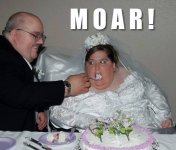snaggy-
Member
I just read through this whole thing. Changed my perspective on what to do with my tent.
Thing is, I am also limited to a certain amount of plants. But I think I may have a valid argument to convince that I am still within the legal limit...Think about it, if a clone is just another part of a single plant, couldn't you argue that you are allocating your plant limit in a different manner that is still reasonably consistent to what you are allowed?
I figure I could get 32 clones off of 6 plants pretty goddam easily. That way I am still using the same plant, but providing a way to create a more efficient grow (considering the space--2'x4') to make sure all the buds reach their full potential in order to insure consistency to help with ailments.
That seems within the lines of the California Supreme Court Case that allows you to go over what is allowed if it is reasonably necessary.
Thing is, I am also limited to a certain amount of plants. But I think I may have a valid argument to convince that I am still within the legal limit...Think about it, if a clone is just another part of a single plant, couldn't you argue that you are allocating your plant limit in a different manner that is still reasonably consistent to what you are allowed?
I figure I could get 32 clones off of 6 plants pretty goddam easily. That way I am still using the same plant, but providing a way to create a more efficient grow (considering the space--2'x4') to make sure all the buds reach their full potential in order to insure consistency to help with ailments.
That seems within the lines of the California Supreme Court Case that allows you to go over what is allowed if it is reasonably necessary.


 hope he is out playing.
hope he is out playing. bump!
bump!






